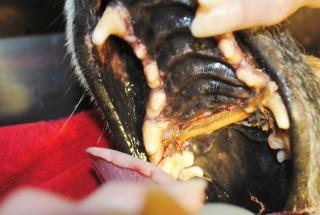#STUFFEMMETTEATS
 Emmett is a 2 year old Great Pyrenees, and he is tall enough to get to anything unattended. This can be a pet owner’s worse nightmare. When you have a curious puppy or young dog, there are all kinds of household hazards you need to constantly be aware of, so we are going to use Emmett’s constant escapades to help our pet owner’s navigate through the tricky health concerns of all puppies and young dogs.
Emmett is a 2 year old Great Pyrenees, and he is tall enough to get to anything unattended. This can be a pet owner’s worse nightmare. When you have a curious puppy or young dog, there are all kinds of household hazards you need to constantly be aware of, so we are going to use Emmett’s constant escapades to help our pet owner’s navigate through the tricky health concerns of all puppies and young dogs.
Episode #5 Bones, rawhides, and deer antlers, and even
sticks; oh my!

Bones and dogs go together like peanut butter and jelly, cookies, and milk, or ham and cheese?? But do they?? Actually, no, bones in most cases are not ideal to give your dog, as they can causes several concerns that you may not be aware of.
The encounter
Scenario: You finish
your buffalo chicken wings, and toss your dog the bones to chew on, you pick up
your favorite pooch a large rawhide at the petstore, your pet goes dumpster diving,
and picks out some choice rib bones from the garbage; the scenarios are
endless.
The scoop:
There are several main concerns with feeding these types of
items to your loving canine friend. The
most common concern is that if your bet is eating chicken or rib bones, these “real”
bones can splinter and cause punctures or abrasions to your pet’s stomach and
intestines. This could lead to bleeding
in the Gastrointestinal tract, and also be quite painful.
The next main concern is that if there is some meat left on
the bones, or flavoring, this can cause upset stomach, and cause your pet to
break out with vomiting, diarrhea or both.
Sometimes, your pet can even fracture a tooth chewing on bones, antlers
or rawhides.
Dogs that eat the rawhide type bones too fast, before they
really get softened up with saliva, could swallow a chunk that is just too big
to pass through there digestive tract causing a life-threatening obstruction,
needing emergency surgery. This can
happen with squares, but is more common with the round ends of the dog rawhide “bones”.
 Pets often present urgently to the veterinary clinic after
chewing on sticks with owner’s complaining of pawing at the mouth,
crying/vocalizing, chewing motions, or even breathing issues. Often, the doctor finds a stick lodge
somewhere in between the teeth, or stuck on the roof of the mouth, and
potentially even puncturing the tissues in the roof of the mouth or cheeks.
Pets often present urgently to the veterinary clinic after
chewing on sticks with owner’s complaining of pawing at the mouth,
crying/vocalizing, chewing motions, or even breathing issues. Often, the doctor finds a stick lodge
somewhere in between the teeth, or stuck on the roof of the mouth, and
potentially even puncturing the tissues in the roof of the mouth or cheeks.
The plan:
Obviously all of these circumstances can require different
medical plans to manage. Teeth fractures
caused by chewing hard bones and antlers almost always will require the tooth
be extracted. The tooth is painful to
your pet, and is very likely to get a dental infection if left in too
long. Upset tummy can require diet
changes, medications, or sometimes a hospital stay depending on how sensitive
your pet’s digestive system is.
Obstructions and GI bleeds are rare from obstructing or splintering bones,
but often this will require a surgery where your veterinarian can go in and
remove these pieces to prevent further harm happening to your pet’s
stomach.
Alternatives for chewing include kong or other rubber toys,
rope toys, and stuffed animals depending on the size of your pet.
 |
| Join us for the next episode of #stuffemmetteats |


No comments:
Post a Comment